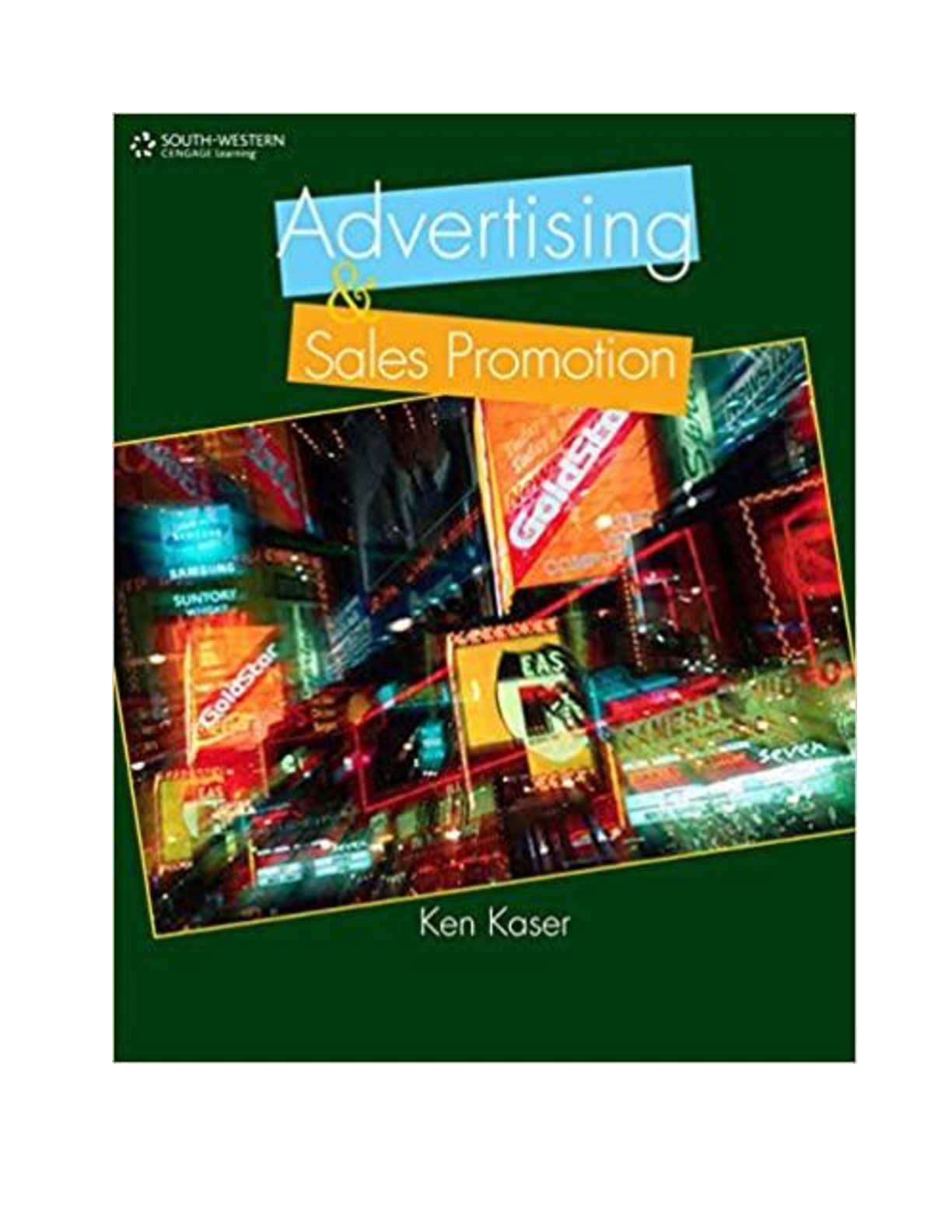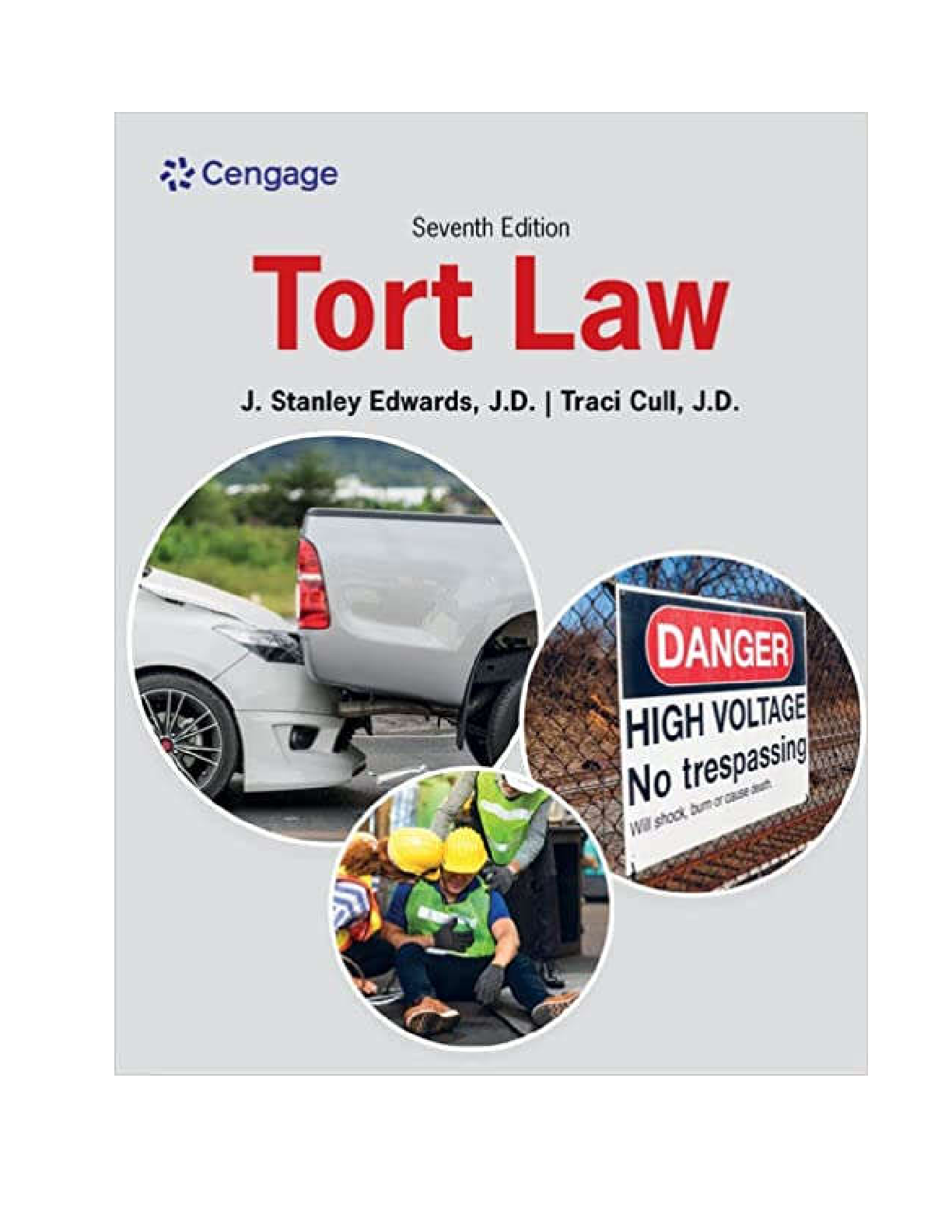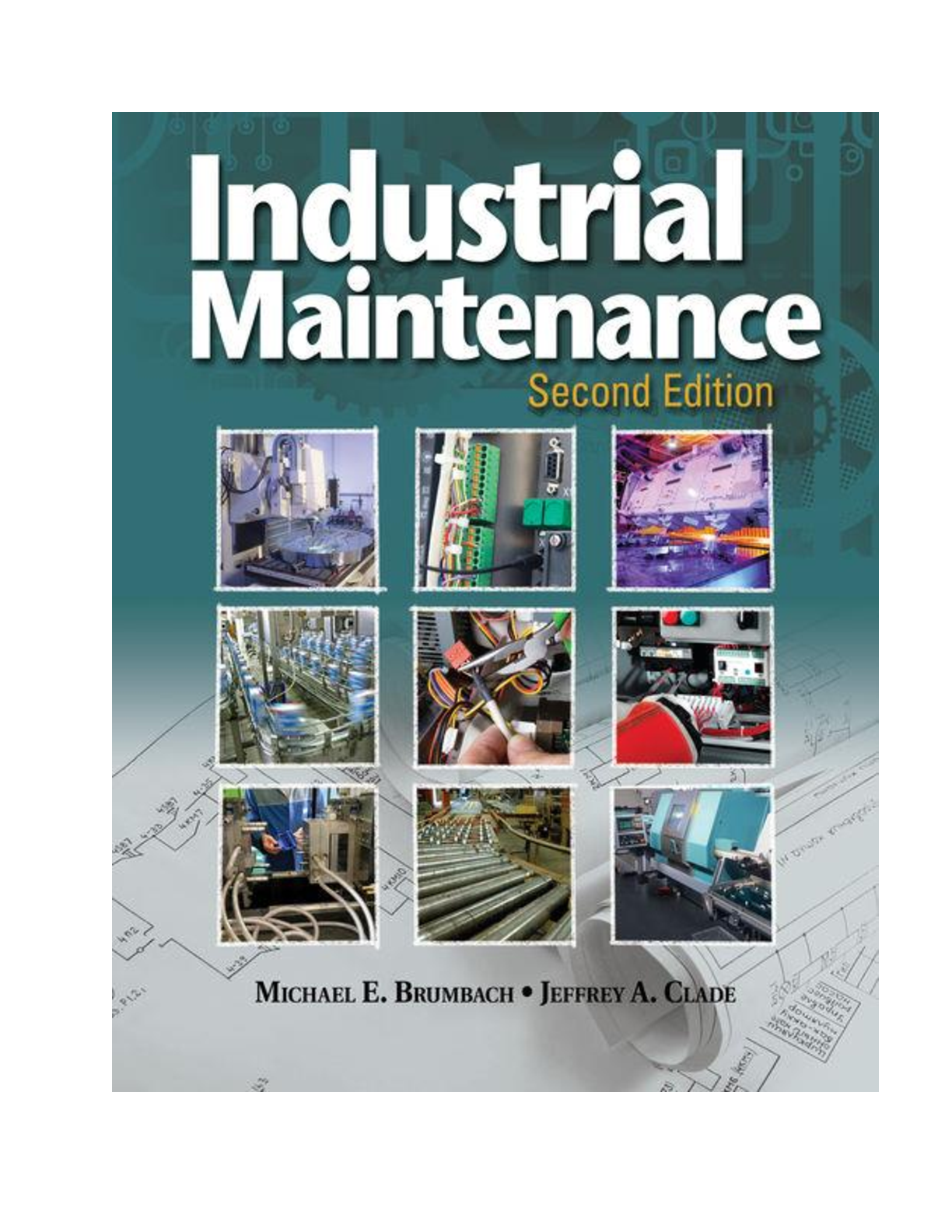Operations Management > eBook-PDF > [eBook] [PDF] Operations Management, 2nd Edition By Gerard Cachon (All)
[eBook] [PDF] Operations Management, 2nd Edition By Gerard Cachon
Document Content and Description Below
Half-Title Page McGraw-Hill Education Series Title Page Copyright Page Dedication Page Author Page Preface Guide Connect Page Acknowledgement Brief Contents Contents 1 Introduction to Oper... ations Management The Customer’s View of the World Check Your Understanding 1.1 A Firm’s Strategic Trade-Offs Check Your Understanding 1.2 CONNECTIONS: Airlines Overcoming Inefficiencies: The Three System Inhibitors Check Your Understanding 1.3 Operations Management at Work Operations Management: An Overview of the Book Check Your Understanding 1.4 Conclusion Summary of Learning Objectives Key Terms Conceptual Questions Solved Example Problems Problems and Applications References 2 Introduction to Processes Process Definition, Scope, and Flow Units Check Your Understanding 2.1 Three Key Process Metrics: Inventory, Flow Rate, and Flow Time Check Your Understanding 2.2 Little’s Law—Linking Process Metrics Together Check Your Understanding 2.3 CONNECTIONS: Little’s Law Conclusion Summary of Learning Objectives Key Terms Key Formulas Conceptual Questions Solved Example Problems Problems and Applications Case Cougar Mountain 3 Process Analysis How to Draw a Process Flow Diagram Check Your Understanding 3.1 Capacity for a One-Step Process Check Your Understanding 3.2 How to Compute Flow Rate, Utilization, and Cycle Time Check Your Understanding 3.3 How to Analyze a Multistep Process and Locate the Bottleneck Check Your Understanding 3.4 The Time to Produce a Certain Quantity Check Your Understanding 3.5 Conclusion Summary of Learning Objectives Key Terms Conceptual Questions Solved Example Problems Problems and Applications Case Tesla References 4 Process Improvement Measures of Process Efficiency Check Your Understanding 4.1 How to Choose a Staffing Level to Meet Demand Check Your Understanding 4.2 Off-Loading the Bottleneck How to Balance a Process Check Your Understanding 4.3 The Pros and Cons of Specialization Check Your Understanding 4.4 CONNECTIONS: The history of specialization Understanding the Financial Impact of Process Improvements Check Your Understanding 4.5 Conclusion Summary of Learning Objectives Key Terms Key Formulas Conceptual Questions Solved Example Problems Problems and Applications References Case Xootr 5 Process Analysis with Multiple Flows Generalized Process Flow Patterns Check Your Understanding 5.1 How to Find the Bottleneck in a Process with Multiple Flows Check Your Understanding 5.2 Flow-Dependent Processing Times Check Your Understanding 5.3 Attrition Losses and Yields Check Your Understanding 5.4 CONNECTIONS: TV Shows Check Your Understanding 5.5 Rework Check Your Understanding 5.6 Conclusion Summary of Learning Objectives Key Terms Conceptual Questions Solved Example Problems Problems and Applications Case Airport Security Reference 6 Learning Curves Various Forms of the Learning Curve Check Your Understanding 6.1 CONNECTIONS: Learning Curves in Sports The Power Law Check Your Understanding 6.2 Check Your Understanding 6.3 Estimating the Learning Curve Using a Linear Log-Log Graph Check Your Understanding 6.4 Using Learning Curve Coefficients to Predict Costs Check Your Understanding 6.5 Check Your Understanding 6.6 Using Learning Curve Coefficients to Predict Cumulative Costs Check Your Understanding 6.7 Employee Turnover and Its Effect on Learning Check Your Understanding 6.8 Standardization as a Way to Avoid “Relearning” Check Your Understanding 6.9 CONNECTIONS: Process Standardization at Intel Drivers of Learning Check Your Understanding 6.10 Conclusion Summary of Learning Objectives Key Terms Key Formulas Conceptual Questions Solved Example Problems Problems and Applications Case Ford’s Highland Plant References 7 Process Interruptions Setup Time Check Your Understanding 7.1 Capacity of a Process with Setups Batches and the Production Cycle Capacity of the Setup Resource Check Your Understanding 7.2 Capacity and Flow Rate of the Process Check Your Understanding 7.3 Utilization in a Process with Setups Check Your Understanding 7.4 CONNECTIONS: U.S. Utilization Inventory in a Process with Setups Check Your Understanding 7.5 Choose the Batch Size in a Process with Setups Check Your Understanding 7.6 Setup Times and Product Variety Check Your Understanding 7.7 CONNECTIONS: LEGO Managing Processes with Setup Times Why Have Setup Times: The Printing Press Reduce Variety or Reduce Setups: SMED Smooth the Flow: Heijunka CONNECTIONS: Formula 1 Conclusion Summary of Learning Objectives Key Terms Key Formulas Conceptual Questions Solved Example Problems Problems and Applications Case Bonaire Salt 8 Lean Operations and the Toyota Production System What Is Lean Operations? Check Your Understanding 8.1 Wasting Time of a Resource Check Your Understanding 8.2 Check Your Understanding 8.3 Wasting Time of a Flow Unit Check Your Understanding 8.4 The Architecture of the Toyota Production System TPS Pillar 1: Single-Unit Flow and Just-in-Time Production Pull Systems Check Your Understanding 8.5 Check Your Understanding 8.6 Transferring on a Piece-by-Piece Basis Takt Time Demand Leveling Check Your Understanding 8.7 TPS Pillar 2: Expose Problems and Solve Them When They Occur: Detect-Stop-Alert (Jidoka) Exposing Problems Jidoka: Detect-Stop-Alert Check Your Understanding 8.8 Root-Cause Problem Solving and Defect Prevention Conclusion Summary of Learning Objectives Key Terms Key Formulas Conceptual Questions Solved Example Problems Problems and Applications Case Uber vs Cabs Case Nike References 9 Quality and Statistical Process Control The Statistical Process Control Framework Check Your Understanding 9.1 CONNECTIONS: Lost Luggage Capability Analysis Determining a Capability Index Check Your Understanding 9.2 Predicting the Probability of a Defect Check Your Understanding 9.3 Setting a Variance Reduction Target Check Your Understanding 9.4 Process Capability Summary and Extensions CONNECTIONS: Apple iPhone Bending Conformance Analysis Check Your Understanding 9.5 Investigating Assignable Causes Check Your Understanding 9.6 How to Eliminate Assignable Causes and Make the Process More Robust CONNECTIONS: Left and Right on a Boat Defects with Binary Outcomes: Event Trees Capability Evaluation for Discrete Events Check Your Understanding 9.7 Defects with Binary Outcomes: p-Charts Check Your Understanding 9.8 CONNECTIONS: Some free cash from Citizens Bank? Conclusion Summary of Learning Objectives Key Terms Key Formulas Conceptual Questions Solved Example Problems Problems and Applications Case Catching Rockets Case The Production of M&M’s References 10 Introduction to Inventory Management Inventory Management Types of Inventory Inventory Management Capabilities Reasons for Holding Inventory Check Your Understanding 10.1 How to Measure Inventory: Days-of-Supply and Turns Days-of-Supply Inventory Turns Benchmarks for Turns CONNECTIONS: U.S. Inventory Check Your Understanding 10.2 Evaluate Inventory Turns and Days-of-Supply from Financial Reports Check Your Understanding 10.3 Inventory Stockout and Holding Costs Inventory Stockout Cost Inventory Holding Cost Inventory Holding Cost Percentage Inventory Holding Cost per Unit Check Your Understanding 10.4 Conclusion Summary of Learning Objectives Key Terms Key Formulas Conceptual Questions Solved Example Problems Problems and Applications Case Linking Turns To Gross Margin 11 Supply Chain Management Supply Chain Structure and Roles Tier 2 Suppliers, Tier 1 Suppliers, and Manufacturers Distributors and Retailers Check Your Understanding 11.1 Metrics of Supply Chain Performance Cost Metrics Service Metrics Check Your Understanding 11.2 Supply Chain Decisions Tactical Decisions Strategic Decisions Check Your Understanding 11.3 Sources of Variability in a Supply Chain Variability Due to Demand: Level, Variety, and Location Variability Due to the Bullwhip Effect Variability Due to Supply Chain Partner Performance Check Your Understanding 11.4 Variability Due to Disruptions Check Your Understanding 11.5 Supply Chain Strategies Mode of Transportation Check Your Understanding 11.6 Overseas Sourcing Check Your Understanding 11.7 CONNECTIONS: Nike CONNECTIONS: Zara Make-to-Order Check Your Understanding 11.8 CONNECTIONS: Dell Online Retailing Check Your Understanding 11.9 CONNECTIONS: Amazon Conclusion Summary of Learning Objectives Key Terms Key Formulas Conceptual Questions Solved Example Problems Problems and Applications Case Timbuk2 12 Inventory Management with Steady Demand The Economic Order Quantity The Economic Order Quantity Model Check Your Understanding 12.1 CONNECTIONS: Consumption EOQ Cost Function Check Your Understanding 12.2 Optimal Order Quantity Check Your Understanding 12.3 EOQ Cost and Cost per Unit Check Your Understanding 12.4 Economies of Scale and Product Variety Check Your Understanding 12.5 CONNECTIONS: Girl Scout Cookies Quantity Constraints and Discounts Quantity Constraints Check Your Understanding 12.6 Quantity Discounts Check Your Understanding 12.7 Conclusion Summary of Learning Objectives Key Terms Key Formulas Conceptual Questions Solved Example Problems Problems and Applications Case J&J and Walmart 13 Inventory Management with Perishable Demand The Newsvendor Model O’Neill’s Order Quantity Decision Check Your Understanding 13.1 The Objective of and Inputs to the Newsvendor Model Check Your Understanding 13.2 The Critical Ratio Check Your Understanding 13.3 How to Determine the Optimal Order Quantity Check Your Understanding 13.4 Check Your Understanding 13.5 CONNECTIONS: Flexible Spending Accounts Newsvendor Performance Measures Expected Inventory Expected Sales Check Your Understanding 13.6 Check Your Understanding 13.7 Expected Profit Check Your Understanding 13.8 In-Stock and Stockout Probabilities Check Your Understanding 13.9 Order Quantity to Achieve a Service Level Check Your Understanding 13.10 Mismatch Costs in the Newsvendor Model Check Your Understanding 13.11 Strategies to Manage the Newsvendor Environment: Product Pooling, Quick Response, and Make-to-Order Product Pooling Quick Response Make-to-Order Check Your Understanding 13.12 CONNECTIONS: Make-To-Order—Dell To Amazon Conclusion Summary of Learning Objectives Key Terms Key Formulas Conceptual Questions Solved Example Problems Problems and Applications Case Le Club Français du Vin Appendix 13A 14 Inventory Management with Frequent Orders Medtronic’s Supply Chain The Order-up-to Model Design of the Order-up-to Model The Order-up-to Level and Ordering Decisions Demand Forecast Check Your Understanding 14.1 Check Your Understanding 14.2 CONNECTIONS: Poisson Performance Measures Expected On-Hand Inventory Check Your Understanding 14.3 In-Stock and Stockout Probability Check Your Understanding 14.4 Expected On-Order Inventory Check Your Understanding 14.5 Choosing an Order-up-to Level Check Your Understanding 14.6 Inventory and Service in the Order-up-to Level Model Check Your Understanding 14.7 Improving the Supply Chain Location Pooling Lead-Time Pooling Delayed Differentiation Check Your Understanding 14.8 Conclusion Summary of Learning Objectives Key Terms Key Formulas Conceptual Questions Solved Example Problems Problems and Applications Case Warkworth Furniture Appendix 14A 15 Forecasting Forecasting Framework CONNECTIONS: Predicting the Future? Evaluating the Quality of a Forecast Check Your Understanding 15.1 Eliminating Noise from Old Data Naïve Model Check Your Understanding 15.2 Moving Averages Check Your Understanding 15.3 Exponential Smoothing Method Check Your Understanding 15.4 Comparison of Methods Time Series Analysis—Trends Check Your Understanding 15.5 Time Series Analysis—Seasonality Check Your Understanding 15.6 Expert Panels and Subjective Forecasting Sources of Forecasting Biases Conclusion Summary of Learning Objectives Key Terms Key Formulas Conceptual Questions Solved Example Problems Problems and Applications Case International Arrivals Literature / Further Reading 16 Service Systems with Patient Customers Queues When Demand Exceeds Supply Length of the Queue Check Your Understanding 16.1 Time to Serve Customers Check Your Understanding 16.2 Average Waiting Time Check Your Understanding 16.3 Managing Peak Demand CONNECTIONS: Traffic and Congestion Pricing Queues When Demand and Service Rates Are Variable—One Server The Arrival and Service Processes Check Your Understanding 16.4 A Queuing Model with a Single Server Utilization Check Your Understanding 16.5 Predicting Time in Queue, Tq; Time in Service; and Total Time in the System Predicting the Number of Customers Waiting and in Service Check Your Understanding 16.6 Check Your Understanding 16.7 The Key Drivers of Waiting Time CONNECTIONS: The Psychology of Waiting Queues When Demand and Service Rates Are Variable—Multiple Servers Utilization, the Number of Servers, and Stable Queues Check Your Understanding 16.8 Predicting Waiting Time in Queue, Tq; Waiting Time in Service; and Total Time in the System Predicting the Number of Customers Waiting and in Service Check Your Understanding 16.9 Check Your Understanding 16.10 CONNECTIONS: Self-Service Queues Queuing System Design—Economies of Scale and Pooling The Power of Pooling Check Your Understanding 16.11 Check Your Understanding 16.12 CONNECTIONS: The Fast-Food Drive-Through Conclusion Summary of Learning Objectives Key Terms Key Formulas Conceptual Questions Solved Example Problems Problems and Applications Case Potty Parity 17 Service Systems with Impatient Customers Lost Demand in Queues with No Buffers CONNECTIONS: Ambulance Diversion The Erlang Loss Model CONNECTIONS: Agner Krarup Erlang Capacity and Implied Utilization Performance Measures Check Your Understanding 17.1 Percentage of Time All Servers Are Busy and the Denial of Service Probability Check Your Understanding 17.2 Amount of Lost Demand, the Flow Rate, Utilization, and Occupied Resources Check Your Understanding 17.3 Staffing Check Your Understanding 17.4 Managing a Queue with Impatient Customers: Economies of Scale, Pooling, and Buffers Economies of Scale Pooling Check Your Understanding 17.5 Buffers Check Your Understanding 17.6 Lost Capacity Due to Variability Check Your Understanding 17.7 Conclusion Summary of Learning Objectives Key Terms Key Formulas Conceptual Questions Solved Example Problems Problems and Applications Reference Case Bike Sharing Appendix 17A: Erlang Loss Tables 18 Scheduling to Prioritize Demand Scheduling Timeline and Applications Resource Scheduling—Shortest Processing Time Performance Measures First-Come-First-Served vs. Shortest Processing Time Check Your Understanding 18.1 Limitations of Shortest Processing Time Resource Scheduling with Priorities—Weighted Shortest Processing Time Check Your Understanding 18.2 CONNECTIONS: Net Neutrality Resource Scheduling with Due Dates—Earliest Due Date Check Your Understanding 18.3 Theory of Constraints Reservations and Appointments Scheduling Appointments with Uncertain Processing Times No-Shows CONNECTIONS: Overbooking Conclusion Summary of Learning Objectives Key Terms Key Formulas Conceptual Questions Solved Example Problems Problems and Applications Case Disney Fastpass References 19 Project Management Creating a Dependency Matrix for the Project Check Your Understanding 19.1 The Activity Network Check Your Understanding 19.2 The Critical Path Method Check Your Understanding 19.3 Slack Time Check Your Understanding 19.4 The Gantt Chart Check Your Understanding 19.5 Uncertainty in Activity Times and Iteration Random Activity Times Iteration and Rework Unknown Unknowns (Unk-unks) Check Your Understanding 19.6 Project Management Objectives Reducing a Project’s Completion Time Organizing a Project Conclusion Summary of Learning Objectives Key Terms Key Formulas Conceptual Questions Solved Example Problems Problems and Applications Case Building the Bird’s Nest Case Building a House in Three Hours References Literature/Further Reading 20 New Product Development Types of Innovations CONNECTIONS: Innovation at Apple Check Your Understanding 20.1 The Product Development Process Understanding User Needs Attributes and the Kano Model Check Your Understanding 20.2 Identifying Customer Needs Coding Customer Needs Concept Generation Prototypes and Fidelity CONNECTIONS: Crashing Cars Generating Product Concepts Using Attribute-Based Decomposition Check Your Understanding 20.3 Generating Product Concepts Using User Interaction–Based Decomposition Check Your Understanding 20.4 Concept Selection Rapid Validation/Experimentation CONNECTIONS: The Fake Back-end and the Story of the First Voice Recognition Software Check Your Understanding 20.5 Forecasting Sales Check Your Understanding 20.6 Conclusion Summary of Learning Objectives Key Terms Key Formulas Conceptual Questions Solved Example Problems Problems and Applications Case Innovation at Google Case Innovation at Toyota References Glossary Index [Show More]
Last updated: 1 year ago
Preview 1 out of 768 pages

Buy this document to get the full access instantly
Instant Download Access after purchase
Add to cartInstant download
We Accept:

Reviews( 0 )
$20.00
Document information
Connected school, study & course
About the document
Uploaded On
Mar 09, 2022
Number of pages
768
Written in
Additional information
This document has been written for:
Uploaded
Mar 09, 2022
Downloads
0
Views
182



 Strategic Management Creating Competitive Advantages, 10e Gregory Dess, Gerry McNamara, Alan Eisner, Seung-Hyun Lee.png)



 Gary Donell, Clarence Byrd, Ida Chen.png)

















